The Little-Known 49-Star Flag
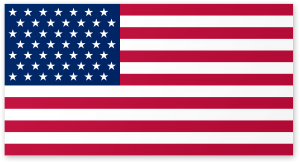 Back in the 1800s, the American Flag changed every couple of years. Every time they added a new state, they added a new star. By the twentieth century however, Manifest Destiny had run its course and the US stopped adding new states all the time. After the admission of Arizona and New Mexico in 1912, there were no more territories in the contiguous United States. The flag froze at forty-eight stars, arranged in a simple 8-by-6 grid. It was under this flag that we fought World War I and World War II. It was under this flag that we became a Superpower. Then in 1959, the US admitted two more states: Alaska and Hawaii. Since then, we’ve had 50 stars on our flag. But many people don’t realize that there was a 49-star flag used in the interim. This is the story of this little-known design.
Back in the 1800s, the American Flag changed every couple of years. Every time they added a new state, they added a new star. By the twentieth century however, Manifest Destiny had run its course and the US stopped adding new states all the time. After the admission of Arizona and New Mexico in 1912, there were no more territories in the contiguous United States. The flag froze at forty-eight stars, arranged in a simple 8-by-6 grid. It was under this flag that we fought World War I and World War II. It was under this flag that we became a Superpower. Then in 1959, the US admitted two more states: Alaska and Hawaii. Since then, we’ve had 50 stars on our flag. But many people don’t realize that there was a 49-star flag used in the interim. This is the story of this little-known design.
The Fourth of July
After a variety of designs during the American Revolution, the nascent United States settled on a flag with 13 stars and 13 stripes, representing the 13 states. Soon after framing a new constitution, the US admitted Vermont and Kentucky to the Union. To reflect the change, they designed a flag with 15 stars and 15 stripes. Then they added Tennessee, Ohio, Louisiana, Indiana and Mississippi. With 20 states and a whole lot of unincorporated land, Americans realized that the flag would start to look pretty silly if they kept adding stars and stripes. The flag remained unchanged until 1818. That year, President Monroe signed a bill mandating 13 stripes for the original Thirteen Colonies, and a number of stars reflecting the current number of states. That law also stipulated that, whenever a new state was admitted, the flag would change the following Fourth of July.
Alaska and Hawaii
Alaska was admitted to the Union on January 3, 1959. According to the 1818 law, the 49-star flag became official 6 months later, on July 4, 1959. Just a month after that, on August 21, Hawaii was admitted as well. However, the flag would not officially change for almost a year. But here’s the thing, everyone knew the flag was going to change. So if you were looking to buy an American Flag in late 1959 / early 1960, would you choose a 49-star flag, knowing it would soon be out-of-date, or a 50-star flag, which wasn’t yet official? Many people opted to buy the new design, and the 49-star flag was relegated to obscurity.
A Common Collectible
If you were opening a business or a school in late 1959, you would probably opt for the 50-star design. But there were still quite a few people buying 49-star flags. After all, it was a collectible. It was a historical curiosity. And with a seven-month gap between the admission of Alaska and Hawaii, there were plenty of 49-star flags lying around in warehouses. Many people bought them up with the intent of reselling them years later. So many people bought them, in fact, that they’re not really that rare nowadays. A quick search of eBay will turn up dozens of vintage 49-star flags for around twenty bucks. So even though the 49-star American Flag isn’t very well-known, it’s still pretty common.

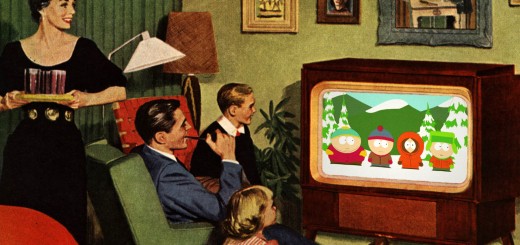
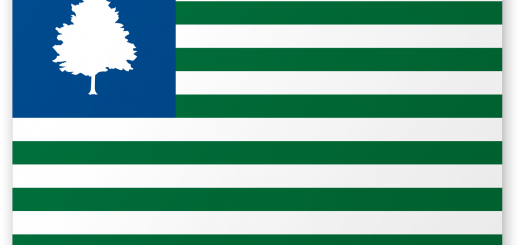
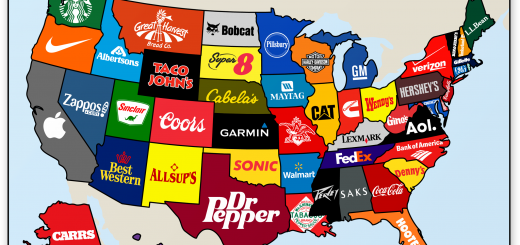



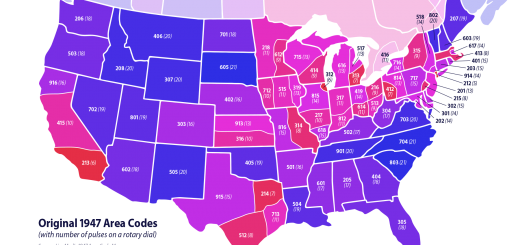
Thank you for the information. I just bought a 49 star flat, complete with original box, at a Discovery Shop. Yes, I was around in 1959 but didn’t think to buy one then. Nice to know a Texan wrote this article. I’m a native Washington State person, but my son, his wife and their 4 children moved to Austin 5 years ago, so, of course, I visit often.
My high school had a 49-star flag hanging in its gymnasium. In 1980.
Hahaha! That’s amazing. Reminds me of a Simpsons episode where Superintendent Chalmers is counting the stars on the flag in the classroom to make sure it has 50.
I always wondered why the 49-star flag had a staggered design. Why not align the stars like the 48-star flag? Does anyone the story behind the odd alignment?
After Alaska was admitted to the union, a 49 star flag would become official on July 4, 1959. It was well known that Hawaii would soon be admitted as the 50th state, and a 50 star flag had already been designed with staggered rows. This flag would become official on July 4, 1960. The 49 star design began the transition from aligned to staggered rows of stars, and therefore the change of design from 49 to 50 stars would not be so striking.
Not really. The history of the flag shows both staggered and straight alignment of stars, depending on the mathematics required to represent the current number of states.
The 6×8 =48 arrangement is rectangular and lends the same proportions as the blue canton in which it resides (wider than it is long).
The 7×7=49 arrangement is square, disproportional to the canton. Staggering the rows allows for the square star field to be squished down, vertically, into a rectangular area proportional to the canton.
Seems to me that what you call a staggered 49-star design is much more attractive than a 7 by 7 one.
Because, 49 stars would not align in a rectangle like 6 x 8 = 48 did. 7 x 7 = 49 requires a bit of juggling to fit on a square. Even and odd numbers have their differences.
The presidential order was that the rows were to be staggered as seen in most photos and flags. However, there were some made (fewer) with seven rows of seven stars evenly aligned. I have only seen one of these and only on a black staff (stick) for mounting in the classroom. It is the normal size for classroom, not the smaller size popular for hand waving. I believe I have the one I described in storage.
That’s really cool. I didn’t know that. I suppose the 49-star-flag wasn’t around long enough to be truly standardized. Companies were just churning them out to make a quick buck.
I have 6 – 49 star flags, in mint condition; 1- 3′ x 5′, 1- 4′ x 6′, 4- 5′ x 9 1/2′
and the most I paid for one was $150 for one of the larger ones on Ebay.
I have 46 vintage US Flags going back to 33 stars, and my most prized is
a 55″ x 100″ 40 star in excellent condition.
My sister designed the 49 star flag for a school contest. Obviously her design won. I still have the newspaper article. Amazing it is still able to be purchased.
there is an official 7×7 flag. it is located in California. Can anyone guess where it is? it was the only time it was flown at an official event. it is the only time it happened.
I have one which was mailed to the county clerk of Riverside, California in 1953. This particular flag was only mailed to posts involved in elections, and there were only 300 made. As of right now, only 5 were known to exist, mine will make 6. Happy to send a pic. It was part of a household effects of a woman who recently passed. She was the mother of a next door neighbor, and the flag almost went in the trash.
What would be the star pattern if the USA steals another country as we did Hawaii and we have 51 stars to arrange?
3 rows of 8 and 3rows of 9
Just picked one up at an estate sale. Never hung, all folded up as from factory, original box, labeled Detra Flag Co.,
Cert. Of Guarantee, booklet in “How to display and respect it. ”
4×6 Bulldog bunting